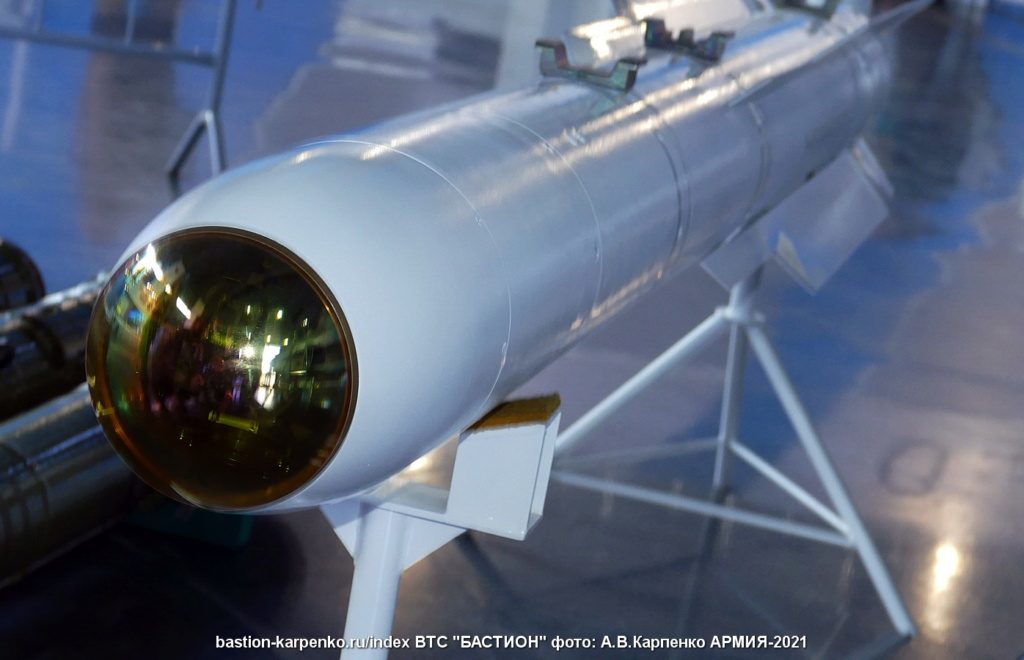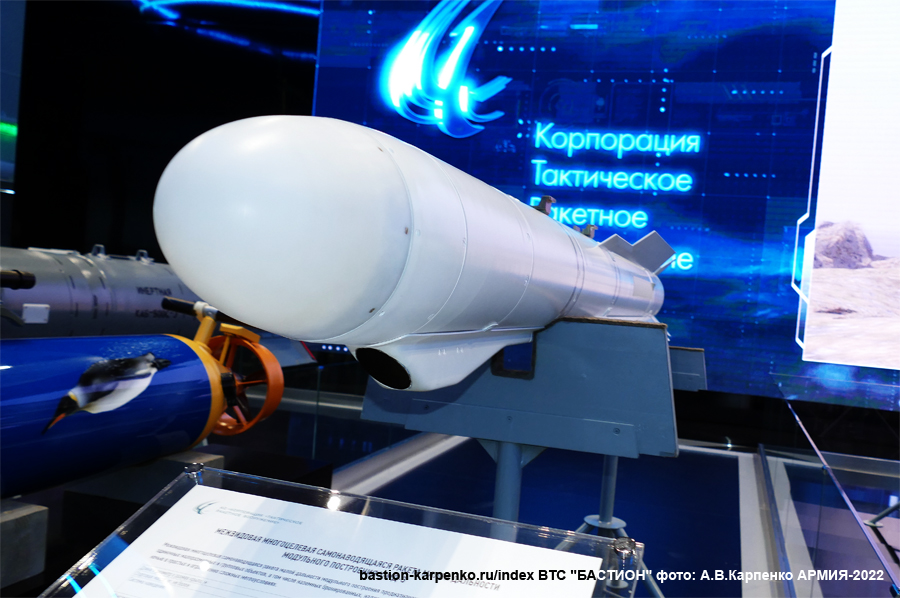Russian winged kamikaze Sacrificing itself, the "Lancet" destroys the enemy
The active development in a number of states of such a class of high-precision weapons as loitering ammunition (AP) prompted the Russian military department and domestic companies - developers of weapons and military equipment to pay close attention to this topic.
Unlike unmanned aerial vehicles, in the field of development, serial production and use of which our country was one of the pioneers and trendsetters, but after the well-known events of the early 1990s, it lost its positions, in the field of creating loitering ammunition, Moscow entered the fight far from first. Nevertheless, in the work in this area, domestic specialists have already achieved some success, and the created samples of kamikaze drones are at the level of world analogues.
"CUBE-BLA"
Apparently, the KUB-BLA device should be considered the firstborn in the Russian family of loitering ammunition. It was his demonstration in open expositions of international exhibitions of weapons and military equipment that became the starting point for the history of Russian kamikaze drones.
The KUB-BLAH type AP was developed by ZALA AERO (part of the Kalashnikov Concern JSC) for the operational engagement of various types of remote targets. The international debut of the first-born of the domestic defense industry in this area of high-precision weapons took place at the beginning of 2019 at the international exhibition IDEX 2019, held in the capital of the United Arab Emirates, Abu Dhabi.
“This complex is a step towards a completely new warfare. We confidently keep in the forefront among the countries producing such weapons, - the words of the General Director of the Rostec State Corporation Sergey Chemezov are quoted in a press release published on February 17, 2019 on the official website of the Kalashnikov Concern. – A high-precision unmanned projectile flies up to 30 minutes at a speed of 130 km/h. The charge on this complex is delivered to the target, regardless of its secrecy and terrain - both at low and at high altitudes. This is a very accurate and extremely effective weapon, which is very difficult to fight with traditional air defense systems.”
This kamikaze drone is designed according to the aircraft scheme with a pushing propeller. Its length is just over 1.2 m, and the wingspan is 0.95 m. According to the developer company, the KUB-BLA loitering ammunition can stay in the air for up to 30 minutes, flying at speeds of 80–130 km/h and carrying a payload of about 3 kg. The device is launched from a catapult.
“The strike unmanned complex delivers a special load at the target coordinates, which are set manually or from an image from the target load of guidance,” emphasizes the website of the ZALA AERO group of companies. It is noted that the advantages of this type of loitering ammunition include high accuracy, hidden launch, noiselessness and ease of use.
Judging by the photo and video materials available in the public domain, the KUB-BLAH BB was used during a special military operation in Ukraine. But more actively to destroy various targets, including mobile ones, Russian military personnel use kamikaze drones of the Lancet family.
Smashing "lancets"
In light of the active use of BBs in recent years in a number of hot spots, including Syria and Libya, as well as in the recent conflict in the Transcaucasus, where these weapons proved to be effective weapons, a new powerful round should be expected in the history of the development of kamikaze drones. Moreover, in a number of countries of the world, projects in this area have already been given the green light.
Russian developers strictly follow global trends, and often even outpace them. It is in this light that it is worth considering the creation by ZALA AERO, which is part of Kalashnikov Concern JSC, of the ZALA Lancet BB family. The premiere show of this family took place in June 2019, on the eve of the opening of the Army-2019 International Military-Technical Forum. As a result, during the work of this exhibition, various potential customers, including foreign ones, could get acquainted with the latest domestic developments in this class of high-precision weapons.
It should be especially noted that the Lancet is not an ordinary classic BB, but (as indicated in the article “The Lancet strike drone: a spear of the XXI century”, published on August 30, 2019 on the website of the state corporation Rostec) “an intelligent multi-tasking weapon, which is capable of independently finding a given target and hitting it.
The complex includes a high-precision striker, as well as reconnaissance, navigation and communications modules. It creates its own navigation field and does not require the creation of land or sea infrastructure, as emphasized in this article.
"Lancet" is not one sample of the class of high-precision weapons under consideration, but, as already mentioned, the BB family. Initially, according to the information provided in the video presentation by the developer, it included the Lancet-1, which has a takeoff weight of 5 kg and can carry a payload of 1 kg, and the Lancet-3, which has a takeoff weight of 12 kg and can carry a payload of 3 kg.
A rather small mass of devices, according to the developers, is provided due to the widespread use of plastics and composite materials in their design. Apparently, "Lancet-3" was defined as the basic model, and "Lancet-1" - as its smaller and lighter version for use on smaller targets.
The first sample of this family has the ability to develop a flight speed of about 80-110 km / h and can fly for up to 30 minutes. Whereas the second device at the same speed is capable of flying for up to 40 minutes. The radius of destruction of targets for both loitering ammunition of the Lancet family is about 40 km.
Both devices are equipped with a warhead with a pre-contact fuse, several types of guidance systems (coordinate system, guidance system using optoelectronic means and a combined guidance system), as well as a television communication channel, which allows for reliable image transmission along the flight route and in the target area. to the operator's control panel. That allows you to reliably confirm the success of the defeat of the target chosen for the attack.
A distinctive feature of both representatives of the Lancet family is that their control system allows you to aim the BB at the target using target designation data received from other aircraft. For example, reconnaissance drones, which are equipped with highly sensitive multi-channel reconnaissance and surveillance systems. As a result, the Lancets themselves do not even need to use their navigation system, since APs can be aimed at the target by reconnaissance drones within the framework of the navigation mesh formed by the latter.
In terms of design, the BBs of the Lancet family are built according to an interesting aerodynamic scheme - with a double X-shaped wing. Such a scheme provides more effective controllability when flying at high speeds than in the case of a large span and larger wing area. It is used on high-precision weapons of this class for the first time in the world.
“Double X is our absolute know-how. When diving and maneuvering, such a scheme behaves much better, besides, the dimensions of the product are greatly reduced, ”the words of ZALA AERO CEO Alexander Zakharov are quoted in the above-mentioned article“ Lancet strike drone: spear of the XXI century.
As a power plant on the BB of the Lancet family, electric motors are used, which rotate one pushing propeller located in the tail section of the vehicle. “ZALA manufactures all modern unmanned aerial vehicles with electric motors. On board the Lancet there is also an electric motor, and on the hull there is a familiar image of a green leaf, - the article emphasizes. “However, the use of an electric motor in this case is not only a concern for the environment, but also invisibility. Electric motors are out of competition for acoustic invisibility. In addition, they are more reliable, lighter and more compact.”
The launch of the "Lancets" is carried out from a catapult similar to that used to launch the KUB-BLAH type AP. This makes it possible to ensure a higher degree of unification when using the systems of high-precision tactical weapons under consideration in the troops.
According to reports, successfully passed tests for the use of "Lancets" for their intended purpose from sea carriers - combat surface ships (boats) of various classes and types. Which greatly expands the range of scenarios for the combat use of these kamikaze drones. Videos from such tests appeared in the public domain at the end of 2021.
UKRAINE IS DIGITIZED
Recently, information has appeared in the open press that the basic version of the loitering ammunition, adopted by the Armed Forces of the Russian Federation, received the designation "Product-52". In addition, based on the results of the combat use of the basic versions of the Lancets, a modernized version was created by the developer company, which received the designation "Product-51" and differs from its predecessor in terms of design (instead of two equal X-shaped wings, it has one large main X-shaped wing and a small X-shaped plumage in the tail), and is also equipped with a more powerful warhead.
“The basic version of the device with a warhead of 3 kg and two X-shaped wings is called “Product-52”, the upgraded drone with a warhead reinforced to 5 kg and one X-shaped wing was called “Product-51,” it is indicated with reference to a source in the domestic military-industrial complex in the RIA Novosti article “The source revealed the real name of the Lancet drones on November 4, 2022.
As part of a special military operation in Ukraine, APs of this family are regularly used to destroy various enemy targets - both stationary and mobile, that is, those on the move (on the march). In particular, the Ministry of Defense of the Russian Federation and other sources posted video and photographic materials in the public domain, indicating the use of "Lancets" to destroy such targets as armored combat vehicles (main tanks, self-propelled artillery mounts, infantry fighting vehicles), towed artillery systems ( including the American M777 howitzers, nicknamed the "Three Axes"), engineering equipment, etc. The use of this AP was also recorded on at least one enemy combat boat.
Separately, it should be noted that the specialists of ZALA AERO have developed not only the complex of high-precision weapons based on the loitering ammunition of the Lancet family, but also created a special simulator for training specialists in its combat use. The simulator is fully built on the use of the virtual reality environment and does not require the use of real WBs. This significantly reduces the cost, reduces time and simplifies the process of training operators of these weapons.
Moreover, as reported in a RIA Novosti note dated November 12, 2022, a map of the territory of Ukraine was digitized to train operators of the Izdeliye-51 and Izdeliye-52 loitering ammunition. “In order to ensure the training of cadets as close as possible to combat conditions in our training center, a map of the entire territory of Ukraine was digitized. This allows our drone simulators, including the Izdeliye-51 and Izdeliye-52 loitering munitions, to simulate missions for operators on real terrain in the special operation zone,” the note says, citing the developer company.
In conclusion, it should be specifically noted that the Lancet family of APs are distinguished not only by their modern shock filling, but also have a high degree of protection against the means of combating unmanned aerial vehicles and APs used today. In particular, they are equipped with a built-in anti-laser protection system, which provides them with higher efficiency compared to their counterparts.
https://nvo-ng-ru.translate.goog/realty/2023-01-12/1_1220_kamikaze.html?_x_tr_sl=ru&_x_tr_tl=en&_x_tr_hl=en



 lancelot
lancelot

